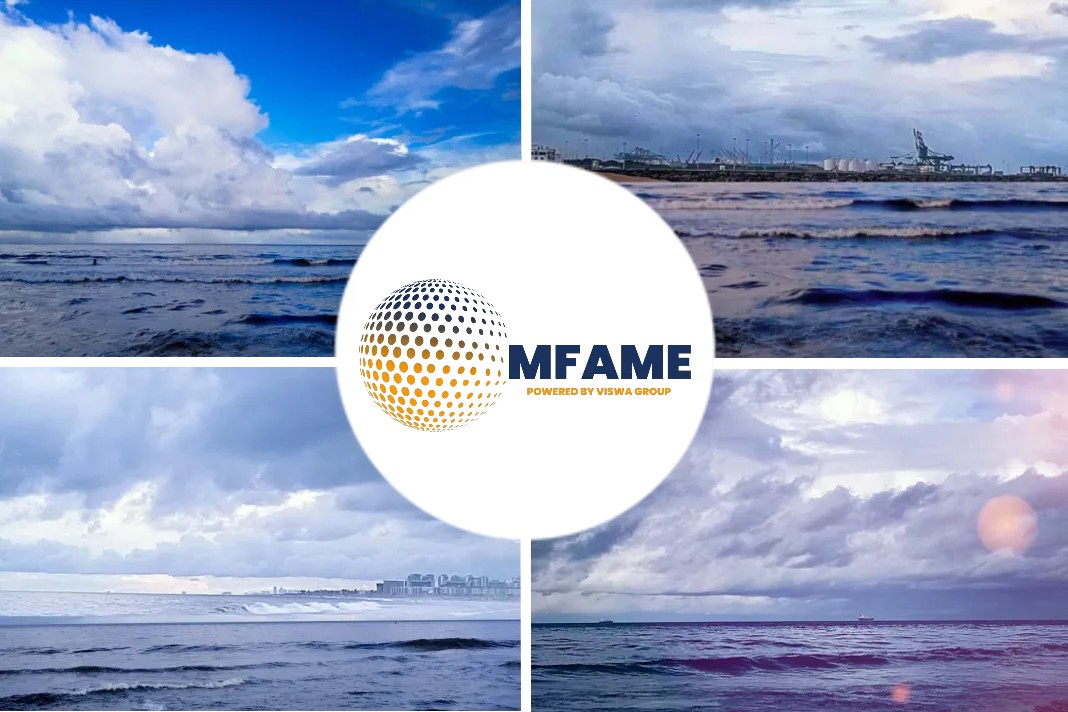
If oil or another hazardous material leaks during earthquakes, storm surges, or other natural disasters, the environment could suffer catastrophic consequences, as reported by Pulitzer Center.
Big problem
Soon after the Solomon Islands was rocked by a 7.0 magnitude earthquake on Nov. 22, the oil began lapping onto Guadalcanal’s sleepy northwestern shores.
Decades of decay combined with seismic activity and increasingly uncertain weather events have already ruptured some shipwrecks’ weakening fuel tanks and hulls, sending thousands of gallons of oil into the sea.
The problem is a big one for the Solomon Islands.
Oil and fuel spills can destroy the reefs and ecosystems fundamental to Pacific Island economies, food systems and protection from the ever-increasing threat of climate change and sea level rise.
Climate change is also causing more unpredictable and severe storms and changing sea conditions.
Out Of Sight But Everywhere
An iron sarcophagus is all that is left of the Kashi Maru, a Japanese merchant ship lying in the midnight-blue waters of Mbaeroko Bay.
Corals adorn the steel hull, which has become a haven for marine life and a pilgrimage for scuba divers.
U.S. forces sank the 654-ton ship during WWII, in the bloody campaign for the Solomon Islands, as fighting migrated westward to the island of New Georgia in 1943.
From above, the ship appeared to be just another island among the more than 900 that comprise the South Pacific nation.
But Indigenous Solomon Islander scouts alerted the Allies to the mysterious new island in Mbaeroko Bay.
The histories that have been written and recorded about the war have informed much of the recent research into the thousands of potentially polluting wrecks across the Pacific.
Nineteen high-priority ships are believed to be in the shallow waters of Chuuk Lagoon, in the Federated States of Micronesia, making it the most disaster-prone area in the Pacific.
The Marshall Islands has 12, while the Solomon Islands has 10.
Most of the sunken ships throughout the Pacific are invisible, with little known about their condition or potential environmentally damaging payloads housed within them.
But Canadian cartographer Paul Heersink’s eight-year effort to map the resting places of WWII ships has contributed significantly to illustrating the breadth of the issue worldwide.
The project was born out of his interest in naval history and a passion for mapping.
A History Of Danger
The threat of oil spills was highlighted in the Pacific region in 2001, when a tropical storm disturbed the resting place of the USS Mississinewa, an oil tanker sunk by a WWII Japanese suicide torpedo in the Federated States of Micronesia.
The generally accepted rule for the rate of corrosion is 0.1 millimeters per year and can be up to 0.2 millimeters.
Still, the timeline is uncertain: The way ships were sunk, what depth they lie at, how much exposure to the sun they face, and whether they have been disturbed all influences risk, Carter says.
“The actual corrosion rate of a given wreck varies enormously,” Carter said in an email.
There are still many shipwrecks in shallower waters that might pose a risk.
An Expensive Problem
Dealing with a potential polluting wreck requires myriad considerations and comes at a hefty cost.
The almost three-year process of remediation and eventual salvage of oil from the 25,000-ton USS Mississinewa in the FSM cost $6 million.
The National Oceanic and Atmospheric Administration is a key scientific adviser for government agencies, U.S. territories and Micronesian states, such as Palau, Marshall Islands and the FSM.
Its work includes a country-wide assessment of shipwrecks in U.S. waters, of which there are approximately 20,000.
“With most pollution response, you don’t have the luxury of deciding when to do it,” Helton says.
But other cases might be easier to anticipate, for remediation at a time that’s less intrusive on marine and avian life, for example.
“There are a lot of things to keep in mind.”
The USS Arizona in Pearl Harbor is one example of a war grave.
Federal authorities have continued to let the oil leak, despite the Department of Defense finding the oil was “particularly harmful” in 2008.
Ships in international waters are generally protected by their flag countries and are considered war graves that cannot be disturbed.
Islanders Need More Information
The Solomon Islands’ environmental ministry is used to field reports of oil seeping from around the country, not just from ships but also aeroplanes and post-World War II dump sites scattered across the archipelago’s waters.
Approximately half a billion pounds of U.S. military paraphernalia was in the Solomon Islands in August 1945, as WWII was ending.
In the greater Pacific, it is estimated the total weight of military presence was almost 20 billion pounds, according to reports from the National Archives and Records Administration.
The issue of dumpsites is both on land and sea, according to Melchior Mataki, permanent secretary for the Solomon Islands Ministry of Environment, Climate Change, Disaster Management and Meteorology.
U.S. forces disposed of the bombs in Johnson Atoll in the early 1990s, but there have since been reports about more mustard gas and other chemical weapons, such as white phosphorous.
The problem persists in the Solomons but still can be ignored or unknown to many residents, according to Mataki, including fishermen who recover unexploded ordnance and use the contents to make explosives that help for fishing, an illegal but common practice.
“It’s the unknowns that are really dangerous for us,” Mataki says.
“So it’s important that we give attention to that.”
And considering the risk of oil spills is only fully known once fully assessed, the Solomon Islands is in need of open and frank conversation about what the Japanese and the Allied navies were carrying during the war.
“I think this is where we would need both the American authorities as well as the Japanese authorities to be open with us,” he says.
Did you subscribe to our newsletter?
It’s free! Click here to subscribe!
Source: Pulitzer Center
















